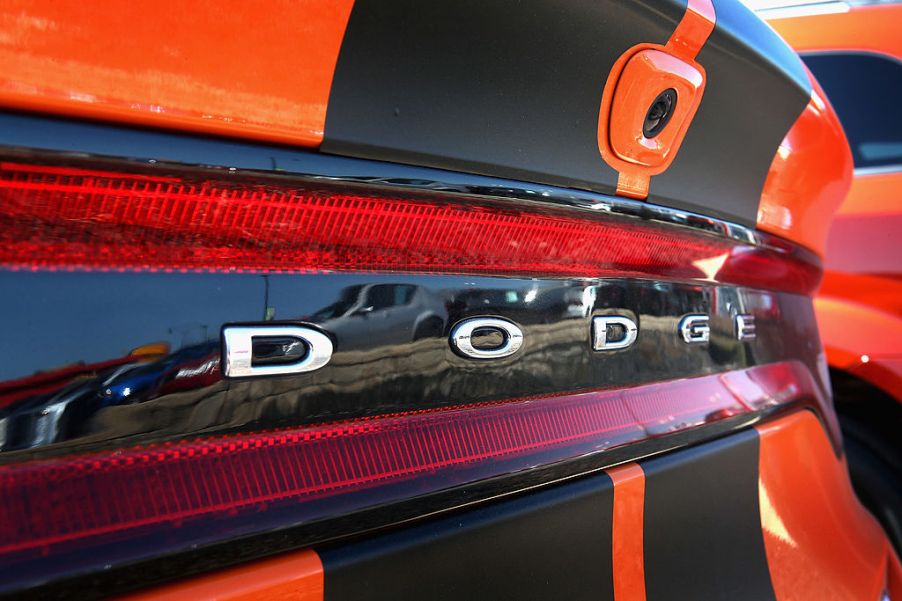
The 2013 Dodge Dart Is by Far the Worst Used Model to Buy
When the Dodge Dart hit the market in 2013, it wasn’t for the first time. The Dodge Dart has a proud history as one of the reasons Dodge rose to fame as it did in the 1960s. Originally, it hit the market in 1960 and had a place in the Dodge stable until 1976 when it discontinued the first time.
The Dodge Dart returned in 2013 but didn’t sell as well as FCA had hoped for. What happened to the latest incarnation of the Dodge Dart?
The new Dodge Dart
It wasn’t the best time to introduce a new car to the market when the Dodge Dart returned. Even a great car would have had an uphill climb to be successful.
The 2013 Dodge Dart wasn’t a great car.
Okay, it took the place of the Dodge Caliber, and it was a better car than that. The Dart was sharp-looking with a roomy cabin and handled well. The navigation and voice-recognition system worked very well.
The resurrection of the Dodge Dart was meant to be part of a new era for Fiat Chrysler, the newly formed automaker that emerged from the recession. They promised a small American car with an Italian influence. It would be sporty, comfy, with great gas mileage and the latest technology. Fiat Chrysler pitched it as part of a family of vehicles that used an Alfa Romeo-based platform. It would take their company and all its brands including Chrysler, Dodge, and Jeep to the next level.
Just over four years later, the Dart was no more. It was intended as a competitor for Chevy Cruze, Honda Civic, Ford Focus, Toyota Corolla, and others that sold somewhere in the ballpark of 200,000 to 300,000 units annually. Dart’s best sales year was 2015, and it managed to sell only 87,392.
Why was the 2013 Dodge Dart so bad?
The first Dodge Dart released, the 2013 models, amassed the most complaints on CarComplaints.com. There were almost 400 complaints received – most of them centered around suspension and transmission problems. What was alarming was not just the number of complaints, but the average mileage the vehicle reached when the troubles set in.
On average, the vehicles began seeing suspension problems by 15,000 miles and cost as much as $7,000 to repair. The transmission problems on average kicked in around 37,000 miles and cost around $700 for the repair.
There were engine problems too. The engine light would come on for many reasons, including bad sensors, bad wiring, faulty gas caps, or ignition coil issues. Transmissions in the 2013 models of the Dodge Dart were failing, with failure hitting around 25,000 miles. Shifting was also difficult. Repairs could involve replacing a transmission cable. Sometimes, it required replacing the entire transmission.
One Texas owner experienced the car going out of gear a couple of times on an access road but also on a freeway. They said the car would shift but not actually change gears. When someone came to tow their Dodge Dart, they explained the linkage was broken at that time. The blower motor went out, followed by the alternator failing, and finally, the transmission.
While the highest number of complaints were filed about the 2013 Dodge Dart models, the 2014 models experienced serious engine issues as well. There were incidents of the engine stalling or failing completely while driving.
What happened to the Dodge Dart?
By 2016, the party was over. The Dart was being discontinued for the second time. Why? There were several reasons.
The Dodge Dart wasn’t the most fuel-efficient car, and it didn’t have exciting performance to offer. It was average. Even at a time when gas prices aren’t so high, having a vehicle that gets great gas mileage is an important offering. It goes a long way in gaining positive press.
There was also speculation that the production of the vehicle may have been rushed according to an analyst for IHS Automotive. In Fiat’s effort to acquire Chrysler during the recession, it stated it would produce a car that got 40 mpg on the highway. Once that goal was met, the UAW’s health care trust would transfer control of 5 percent of Chrysler’s stock to FCA.
After that, they just wanted to get the Dart built quickly. It doesn’t mean that it was built correctly.
The control Fiat wanted coincided with delays to the nine-speed transmission they wanted to implement in the Dodge Dart. The transmission would have given the Dart better performance and fuel economy but wasn’t ready when the Dart went into production.
The Dart received suboptimal transmissions, and for the first many months was available only with a manual transmission. In the U.S. where 90 percent of vehicles sold are automatic, it was poorly planned. When automatic transmissions became available, they were six-speed automatics either made by Hyundai or Fiat. Fiat used dual-clutch technology, which isn’t overly popular in the U.S.
And there were also the complaints . . .
Discontinuing the Dodge Dart made good business sense. The automaker could turn their attention and efforts to producing trucks and SUVs and turning a profit.


